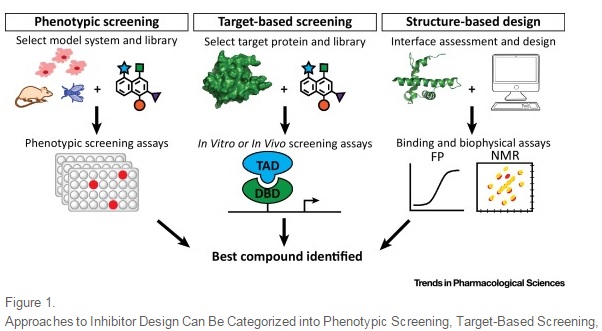摘要:
Over the past decade, protein–protein interactions (PPIs) have gone from being neglected as ‘undruggable’ to being considered attractive targets for the development of therapeutics. Recent advances in computational analysis, fragment-based screening, and molecular design have revealed promising strategies to address the basic molecular recognition challenge: how to target large protein surfaces with specificity. Several systematic and complementary workflows have been developed to yield successful inhibitors of PPIs. Here we review the major contemporary approaches utilized for the discovery of inhibitors and focus on a structure-based workflow, from the selection of a biological target to design.
趋势:
Natural protein complexes are not always optimized for affinity. Computational approaches to locate underutilized and cryptic pockets are leading to new classes of potent inhibitors.
Traditional modulators of protein–protein interactions (PPIs) comprise orthosteric inhibitors; however, we are now seeing a rise in allosteric modulators as well as stabilizers of PPIs.
Protein secondary structure mimics have been well developed over the past decade and now there is a push for the development of protein tertiary and quaternary mimics.
Advances in proteomics are paving the way to identify direct protein targets of modulators.

原文链接:
